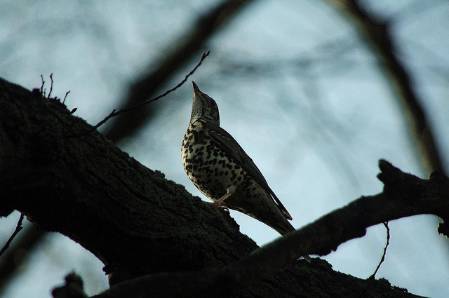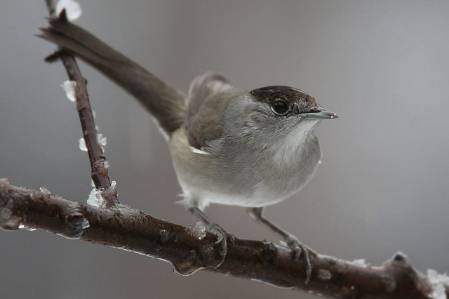At this time of year deciduous trees can look their most beautiful silhouetted against the sky, revealing their true form and structure. Some shapes are obscured in a wrapping of ivy (Hedera helix), its lush, dark green growth providing a source of food and habitat for a variety of wildlife, as well as a traditional Christmas decoration in our homes.

Ivy covering a tree stump © Jonathan Jackson.
Although ivy is no parasite it can sometimes cause damage as it climbs and clings to trees and hedges competing for plant nutrients in the soil, and its thick evergreen leaves, competing for light. Occasionally, if left unchecked, the sheer expanse of an ivy wrapping will act like a sail and in winter strong winds will cause the host tree and ivy stems to snap and capsize.
We restrain ivy growth on our trees on our trees in the wildlife garden by cutting it back to just below the crown before it competes for light in the tree canopy. We also keep it in check on the ground, preventing it covering large areas of ground where it would restrict the growth of other woodland plants such as primroses (Primula vulgaris) and lesser celandine (Ficaria verna).
Ivy growth on the lime tree in the centre of the Wildlife Garden © Jonathan Jackson.
Ivy starting to spread along the ground © Jonathan Jackson.
But no wildlife garden is complete without a wealth of ivy – albeit restrained.
Just two months ago, we watched our bees (Apis melifera) entering the bee tree laden with pollen from ivy. On a sunny autumn day there’s a constant humming from ivy flowers as bees and wasps congregate around the late autumn nectar. And during evenings a variety of moth species silently feed on ivy’s nectar-rich flowers
 .
.
Bees nectaring on ivy flowers.
But both holly and ivy are Important in the life cycle of the holly blue butterfly (Celastrina argiolus). The female lays her eggs on ivy in autumn in time for the larvae to feed on developing flower buds – the chrysalis overwinters and the adult emerges in spring.The spring adult lays eggs beneath the flower buds of holly (Ilex aquifolium).
Holly blue (Celastrina argiolus) on bluebell © Tim Melling, Butterfly Conservation.
Ivy leaves are a food source for the larvae of several moth species, notably the Swallow-tailed moth (Ourapteryx sambucaria)
Swallow-tailed moth (Ourapteryx sambucaria) on ivy © Robert Thompson, Butterfly Conservation
Ivy-clad trees and other structures provide thick cover and camouflage for nesting birds as well as hibernating insects – I inadvertently disturbed four common plume moths (Emmelina monodactyla) last week from the base of an ivy-clad fence.
Berries provide nest cover and food for birds as we have written about in a previous blog
Blackbird feeding off ripe ivy berries in March © Jonathan Jackson.
But what of ivy’s seasonal associations and other uses? Roy Vickery tells us more:
Although it’s associated with Christmas, at least in urban areas ivy is not used a great deal as a Christmas decoration. Like holly it would remain looking fresh throughout the festive season before the widespread installation of central heating, now when homes are warmer and drier its leaves soon lose their sheen and then the twigs lose their leaves. Sometimes stretched crepe paper, usually red, was wrapped around fruiting ivy to make ornamental ‘roses’.
Fruiting ivy – still green this week and unpalatable to birds © Jonathan Jackson.
However, there are records from places as far apart as Morayshire and Essex that ivy was considered to be unlucky and should not be brought indoors. Alternatively, as reported from Staffordshire in 1983: ‘Holly and ivy must not be taken in house until Christmas Eve and must be removed by January 6th.’
Presumably an exception was made on washdays when water in which ivy leaves had been boiled was used to clean the blue serge fabric from which the uniforms of railway men, postmen, and others was made. In County Derry: ‘With an old clothes brush take your husband’s serge suit and proceed to brush in the liquid, especially [into] the lapel and neck and cuffs. Then take a clean cloth and iron it all over. It’s like new.’
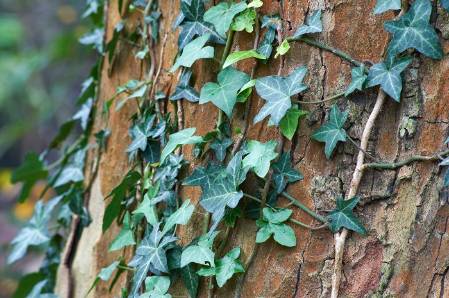
Ivy beginning its ascent up a London plane tree (Platanus x hispanica) in the Wildlife Garden
© Jonathan Jackson.
And ivy leaves, either fresh, boiled or seeped in vinegar, tied on to corns and left on for about three days, will successfully remove the corn and its root so that it doesn’t return. Other medical uses included the treatment of burns in County Cork and eczema in Derbyshire.
Farmers would tempt sick sheep by offering them ivy: ‘If they did not eat ivy, they were going to die.’
Although it widely assumed that ivy is poisonous, Brian Bonnard in his Channel Island Plant Lore (1993) record that during the German occupation of the Islands in 1940-5 ‘ivy berries were boiled and eaten’. We do not recommend this.
Thank you Roy. You can read more about the uses of ivy and much more on Plant-lore Archive.
With seasonal evergreens in mind, you may like to see the progress of our mistletoe (Viscum album), planted in 2009 by Jonathan Briggs and featured in our wildlife garden blog two years ago. The plant has grown considerably in 2 years and .......
Five and a half years after planting, our mistletoe has produced berries for the first time…
© Jonathan Jackson.
And finally, garden sightings this week also included…
A healthy young fox captured on camera today © Daniel Osborne.
Merry Christmas and Happy new Year!



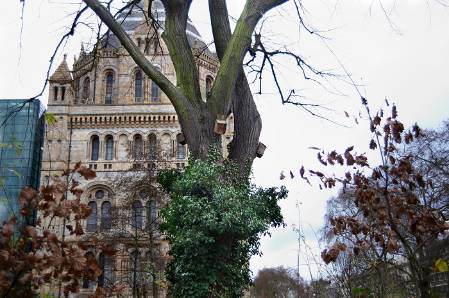

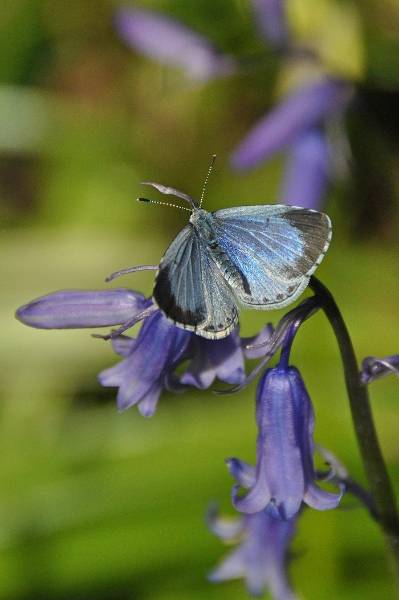


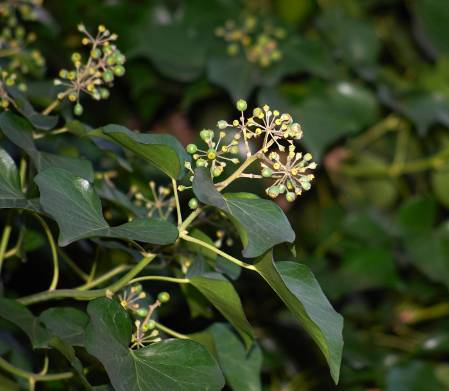
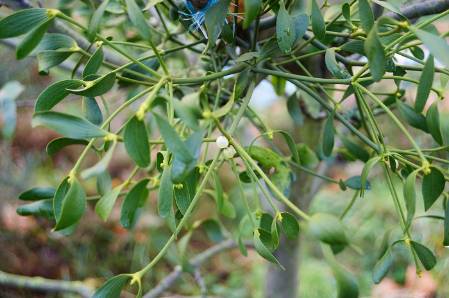
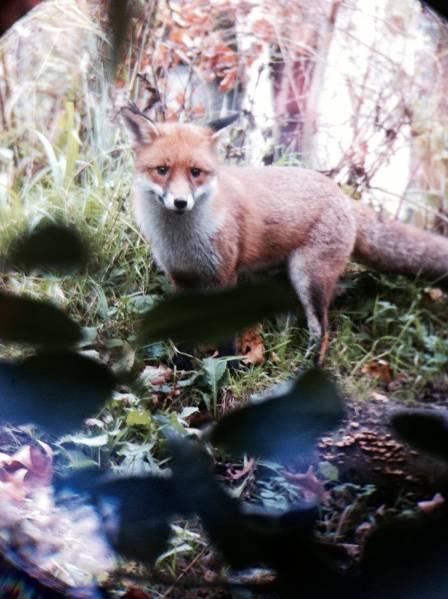
.jpg)
.jpg)
+(Custom).jpg)
.jpg)
